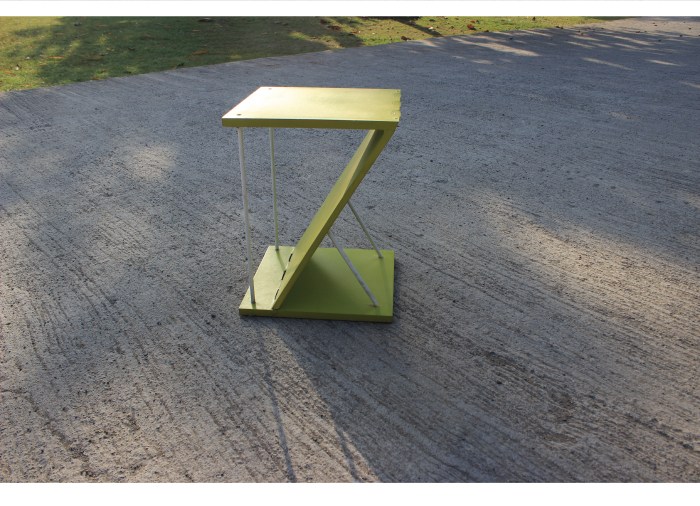Limited-run gallery furniture represents a unique intersection of art and functionality. These pieces, often crafted by renowned designers or produced in exceptionally small quantities, offer discerning collectors a chance to own truly exceptional items. The allure lies not only in the inherent quality and aesthetic appeal but also in the exclusivity and potential appreciation in value over time.
This guide explores the world of limited-run gallery furniture, examining its characteristics, appeal, and considerations for prospective buyers.
From meticulously hand-carved wooden chairs to avant-garde metal sculptures doubling as functional seating, limited-run pieces often showcase innovative design, high-quality materials, and impeccable craftsmanship. Their limited availability ensures a level of exclusivity that elevates them beyond mere furniture, transforming them into coveted collectibles and conversation starters. Understanding the market, identifying reputable sources, and appreciating the artistry involved are key to navigating this specialized realm.

The allure of owning a unique piece of furniture, a statement piece crafted with meticulous detail and destined to become a cherished heirloom, is undeniable. This is the essence of limited-run gallery furniture. These pieces, often handcrafted by renowned designers or emerging artists, transcend mere functionality; they become art objects, elevating the aesthetic of any space. This comprehensive guide delves into the world of limited-run gallery furniture, exploring its characteristics, benefits, investment potential, and how to navigate this specialized market.
Understanding Limited-Run Gallery Furniture
Limited-run gallery furniture differs significantly from mass-produced pieces. It’s characterized by:
- Limited Quantities: As the name suggests, only a small number of each piece are ever created. This scarcity drives exclusivity and value.
- High-Quality Materials: Expect premium materials like exotic woods, fine leathers, luxurious fabrics, and precious metals. Sustainability and ethical sourcing are often key considerations.
- Exceptional Craftsmanship: These pieces are often handcrafted or utilize highly skilled artisans and techniques, resulting in superior quality and attention to detail.
- Unique Design: Limited-run furniture often features innovative, bold, or highly stylized designs that push creative boundaries. They are often one-of-a-kind or from very small production runs.
- Artistic Collaboration: Many pieces are the result of collaborations between furniture makers and artists, sculptors, or designers, blurring the lines between art and functional design.
Types of Limited-Run Gallery Furniture
The range of styles and materials is vast. You might find:

- Sculptural Chairs and Sofas: Pieces that are as much art as they are seating.
- Statement Tables: Coffee tables, dining tables, and consoles crafted from unique materials and with striking designs.
- Custom Cabinets and Bookcases: Bespoke storage solutions with intricate detailing and exceptional craftsmanship.
- Limited Edition Lighting: Unique lamps and chandeliers that serve as both functional and artistic focal points.
- Antique Reproductions (with modern twists): Limited-run pieces inspired by classic designs but incorporating contemporary materials or techniques.
The Benefits of Owning Limited-Run Gallery Furniture
Beyond the aesthetic appeal, investing in limited-run gallery furniture offers several advantages:
- Investment Potential: Like fine art, limited-edition furniture can appreciate in value over time, particularly if the designer gains recognition or the piece becomes highly sought after.
- Exclusivity and Status: Owning a unique piece sets your space apart and reflects discerning taste.
- Exceptional Quality and Durability: The superior materials and craftsmanship ensure longevity and resistance to wear and tear.
- Conversation Starter: These pieces inevitably spark conversations and become focal points in any room.
- Personal Expression: Limited-run furniture allows you to express your individual style and curate a space that truly reflects your personality.
Finding and Purchasing Limited-Run Gallery Furniture
Sourcing these unique pieces requires research and a discerning eye. Consider these avenues:

- High-End Furniture Galleries and Showrooms: These are prime locations to discover emerging and established designers.
- Art Fairs and Design Shows: These events often feature limited-edition pieces and provide opportunities to meet the artists and designers themselves.
- Online Marketplaces and Auction Houses: Websites specializing in high-end furniture and online auction platforms can offer access to a wider selection.
- Interior Designers and Consultants: Professionals can provide guidance and access to exclusive pieces not readily available to the public.
- Directly from the Artist or Maker: Contacting artists or workshops directly can offer unique opportunities to commission custom pieces or acquire limited-edition works.
Caring for Your Limited-Run Gallery Furniture
Preserving the investment and beauty of these pieces requires proper care. This includes:
- Regular Cleaning and Maintenance: Follow the manufacturer’s recommendations for cleaning and polishing.
- Protection from Environmental Factors: Avoid direct sunlight and extreme temperature fluctuations.
- Proper Handling and Storage: Handle the furniture with care and use appropriate padding and protection during storage or relocation.
- Professional Restoration (if needed): For any significant damage, seek the services of a reputable furniture restoration specialist.
The Investment Aspect of Limited-Run Gallery Furniture
While not a guaranteed investment, limited-run gallery furniture can appreciate in value, especially if:
- The Designer Gains Prominence: Increased recognition for the designer leads to higher demand for their work.
- The Piece Becomes Iconic: A unique design that captures the zeitgeist can become highly sought after.
- The Materials are Rare or Valuable: Pieces crafted from rare or precious materials will hold their value better.
- The Piece is Well-Maintained: Proper care ensures the furniture remains in excellent condition, enhancing its value.
Frequently Asked Questions (FAQ)
- Q: How can I verify the authenticity of a limited-run piece? A: Look for certificates of authenticity, maker’s marks, or documentation from the gallery or designer.
- Q: What is the typical price range for limited-run gallery furniture? A: Prices vary widely depending on the designer, materials, and complexity of the piece, ranging from thousands to hundreds of thousands of dollars.
- Q: How do I insure my limited-run furniture? A: Contact your homeowner’s or renter’s insurance provider to add a rider for valuable items or consider specialized fine art insurance.
- Q: Can I resell limited-run furniture? A: Yes, but finding the right buyer might require working with specialized galleries or auction houses.
- Q: What are the potential risks of investing in limited-run furniture? A: Like any investment, there’s a risk that the value might not appreciate as expected. Market fluctuations and changes in taste can affect resale value.
Call to Action
Ready to elevate your space with a unique piece of art and functional design? Explore the world of limited-run gallery furniture and discover the perfect statement piece for your home. Contact a reputable gallery or designer today to begin your journey.
Top FAQs
What makes gallery furniture “limited-run”?
Limited-run furniture is produced in small quantities, often numbered or otherwise identified as a unique edition. This scarcity contributes to its value.
How can I authenticate a piece of limited-run gallery furniture?
Seek authentication from reputable galleries, appraisers, or the designer themselves. Look for certificates of authenticity or identifying markings.
Where can I find limited-run gallery furniture?
High-end design galleries, auction houses, and specialized online marketplaces are good starting points.
How do I care for limited-run gallery furniture?
Proper care varies depending on the materials. Consult a professional conservator or follow the manufacturer’s instructions.
